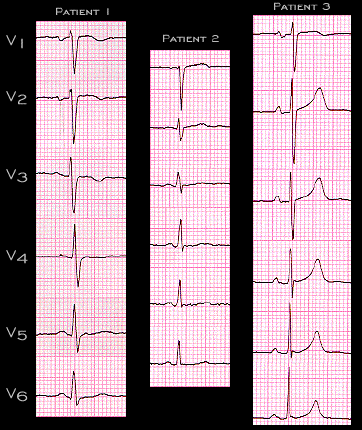
In patient 1, an S wave is present in all leads although the ratio of the R wave to the S wave (R/S), becomes progressively greater from leads V1 to V6. In the other two patients, there is no S wave in V6. In patient #2, the QRS complex is almost totally positive in leads V3 and V4, whereas in patient #3, it does not become almost totally positive until V5. This variability in the transition from negative to positive QRS complexes is normal.
